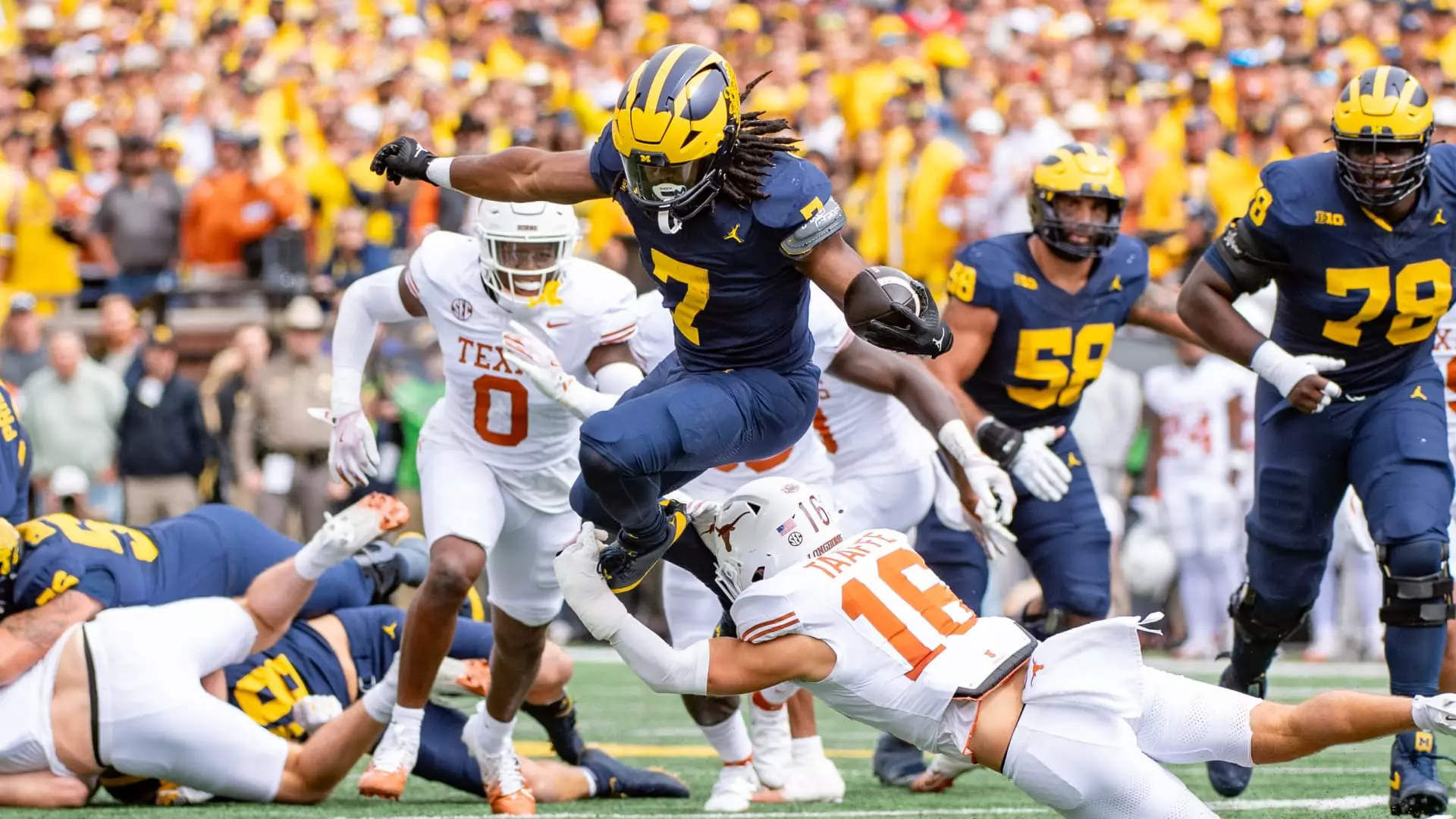The introduction of a 12-team College Football Playoff (CFP) format has sent ripples through the sports media landscape, particularly influencing how companies like Disney capitalize on the renewed excitement surrounding the game. This season marks a significant shift in the competitive dynamics of college football, allowing a broader swath of fans to engage with the postseason than ever before. With heightened interest and participation comes the critical need for media companies to adapt their strategies, particularly in how they approach advertising and viewership engagement.
Data indicates that Disney’s networks, encompassing ABC, ESPN, and ESPN2, are on track to experience their most-watched college football season since 2016. Kevin Krim, CEO of EDO, highlighted a notable uptick in viewer engagement with advertisements during games broadcasted by Disney. This trend can largely be attributed to the expanded playoff system, which renders regular-season games more significant and consequential. With iconic rivalries—such as Ohio State versus Michigan, and Texas facing Texas A&M—on the schedule, fans are more emotionally invested in their teams’ performance, thereby driving up viewership ratings.
Jim Minnich, a senior VP of Disney advertising revenue, echoed this sentiment by reflecting on the incredible success the company has seen from its sports portfolio. The relevance of college football to Disney’s overall strategy cannot be overstated, as it not only enriches their sports catalog but also enhances the appeal of their digital platforms.
The enhanced format of the CFP has not only encouraged viewers but has also reshaped the advertising landscape for Disney’s networks. EDO’s findings indicate a striking 11% increase in consumer engagement during college football commercials compared to the general primetime average across competing networks. This metric suggests that fans are not just watching the games; they are actively participating in the advertising experience, which makes those spots immensely valuable to brands.
The interest in advertising slots is particularly notable around high-profile weekends like Thanksgiving, a significant period filled with games that decide playoff seeding. Many brands, including familiar names like Jimmy Dean, Just for Men, and Popeyes, have recognized the effectiveness of their advertising strategies on these platforms, tailoring their campaigns to resonate with a demographic that is already highly engaged.
Despite the turbulence faced by the broader media industry—where many companies grapple with declining cable subscriptions and the shift to streaming—Disney appears to be navigating this landscape effectively through its sports broadcasting strategy. As advertisers continue to chase the engagement that live sports offers, the result is a tangible increase in demand for advertising slots, evidenced by a wave of renewed contracts extending well into the future.
Minnich noted that they are selling advertising spots at an unprecedented rate, especially for the championship games. Early renewals for College Football Playoff partners emphasize a robust confidence in the sport’s ongoing appeal, indicating that advertisers recognize the consistent value generated by these broadcasts.
In an environment where traditional television viewership has faltered, live sports remain a stronghold for advertising revenues. College football, often trailing only the National Football League in terms of ratings and revenue, continues to attract significant investments from major media companies. The financial agreements surrounding media rights illustrate this escalation in demand; for instance, Disney’s commitment of $300 million per year for Southeastern Conference (SEC) rights reflects the premium placed on live sports.
The interconnected contracts—such as the $7.8 billion deal with the CFP and ESPN—illustrate a surge in sports media spending, reinforcing college football’s position as a lucrative offering in a fragmented media landscape. The collective strength of college football across multiple networks enhances the competitive environment, ensuring that this sport remains a top property for advertisers.
As the expanded College Football Playoff continues to play out, its implications for media companies like Disney are multi-faceted and promising. Increased viewership and engagement pave the way for advertisers to pursue a more vibrant landscape, one which promises to yield strong returns in both traditional and digital advertising realms. The 12-team format is more than a mere change in the game structure; it’s a strategic development that solidifies college football’s role as a central player in the media narrative, ensuring that excitement remains high and engagement even higher. As we look to the future, the interplay between sports, media, and advertising will undoubtedly evolve, but one thing remains clear: college football is a cornerstone of America’s entertainment culture, poised for sustained growth in the years to come.


Leave a Reply